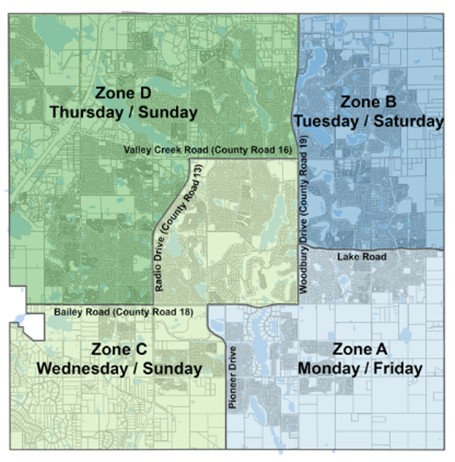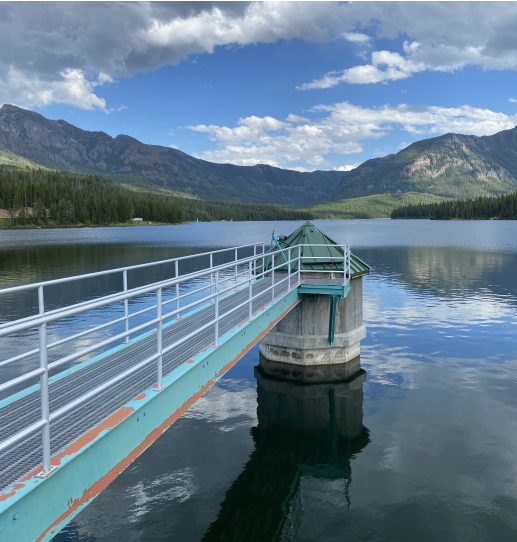The changing seasons of Minnesota and Montana don’t wait, and neither does water demand. As municipalities across the country face the rising pressure of climate shifts and growing populations, the cities of Woodbury, Minnesota and Bozeman, Montana are proving that resource planning isn’t optional – it’s essential.
City of Woodbury – Balancing Demand and Public Need
As one of Minnesota’s fastest growing municipalities, the City of Woodbury has boldly faced the challenges attributed to prolonged drought, source water contamination, and a growing population. In 2021, the State of Minnesota Department of Natural Resources requested communities conserve water and reduce withdrawals from local aquifers. To manage water usage and adhere to the State’s request, the City adjusted its citywide watering policy as the most impactful solution to promote conservation.
While effective at reducing overall water consumption, the newly implemented Tier Two watering restrictions that limited watering to twice a week led to uneven demand across the City. To level the peak in usage, the City of Woodbury partnered with AE2S to develop a strategy for consistent, sustainable water management. Using metered data, AE2S provided recommended updates to Woodbury’s policy, which included redrawn watering zones, revised schedules, and a timeline accounting for future growth.
These recommendations were implemented by the City during the 2023 watering season, and while the revised irrigation policy successfully leveled the swing of water demand through summer weekends, the citizens of Woodbury preferred a solution that would provide better spacing between watering days.
To address the concerns of the public, the City of Woodbury alongside AE2S further refined the watering zones leading to an effective water conservation program aimed at improving community satisfaction without sacrificing the City’s conservation objectives. Public outreach is important for the success of initiatives like this. The City added comprehensive conservation information to Woodbury’s website to explain the lawn watering zones, provide tips, and explain conservation policies. The graphic below illustrates Woodbury’s watering zones and schedule.

“With multiple competing challenges the partnership with AE2S was critical in development and implementation of the new irrigation policy. The successful effort was a team approach supported by technical expertise and an effective communication plan with residents, businesses, and elected leaders,” says Jim Westerman, Woodbury Assistant Public Works Director.
As the City of Woodbury continues to manage the water needs of the community, the forward thinking and thoughtful adjustments turned a technical challenge into a successful conservation win. By combining public feedback with expert guidance, they created a practical and sustainable plan for managing water usage.
City of Bozeman – Meeting Growing Needs
While Woodbury’s success story is one of managing peak seasonal demand, Bozeman faces a different challenge: rapid, sustained population growth with water sources susceptible to drought and highly dependent on snowpack. Located in the Gallatin Valley in eastern Montana, Bozeman is one of the fastest-growing cities in the Northern Rockies. As the gateway to Big Sky and West Yellowstone, Bozeman has attracted new residents looking for a blend of natural beauty, outdoor recreation, and a vibrant downtown community. Other appealing factors contributing to Bozeman’s population boom are Montana State University, a growing tech sector, and a strong local economy.
The City of Bozeman quickly understood that prolonged drought years paired with steady population growth could result in significant challenges if the needs of the City were left unaddressed. To ensure the water supply continues to meet demand, the City contracted with AE2S to develop the initial Integrated Water Resources Plan in 2013 with the goal of improving the City’s water supply resiliency and initiating a water conservation program.
Since the initial plan development, the City of Bozeman has rolled out a comprehensive water conservation strategy boasting a long list of wins. The strategy includes a drought management model and plan, along with a robust water conservation program that has reduced the average demand for water from approximately 175 to 120 gallons per capita per day (GPCD), and a water supply optimization and management tool that takes a closer look at water supply dynamics and the impacts of shifting climate patterns.
To continue the impressive efforts undertaken by the City of Bozeman, work is currently underway to update the Integrated Water Resources Plan to include a heavy focus on community outreach. The goal of the update is to gather input from the citizens of Bozeman and establish community sponsored water management priorities to provide an adequate water supply for the future.
Shared Lessons and Success
Although the geography of Woodbury and Bozeman are different, they share a common challenge: long-term water supply. In Woodbury, success came from finding a balance between operational needs and community expectations. In Bozeman, it meant getting ahead of rapid growth with future-focused initiatives and infrastructure.
What both Cities share is the commitment to responsible water stewardship and a willingness to take action. With guidance and a shared vision, each City was able to turn water management challenges into practical, community-supported solutions. While effective water management programs are never one-size-fits-all, success stories such as these demonstrate just how important empowering local leaders with tools, data, and strategies that reflect the needs of their community can be.
If your community is ready to take the next step in water conservation and creating a resilient water supply, AE2S can help turn your vision into reality – one drop at a time. Contact Zach Magdol, Water Resources Practice Leader, to discuss plans for your water system’s conservation and management efforts.

